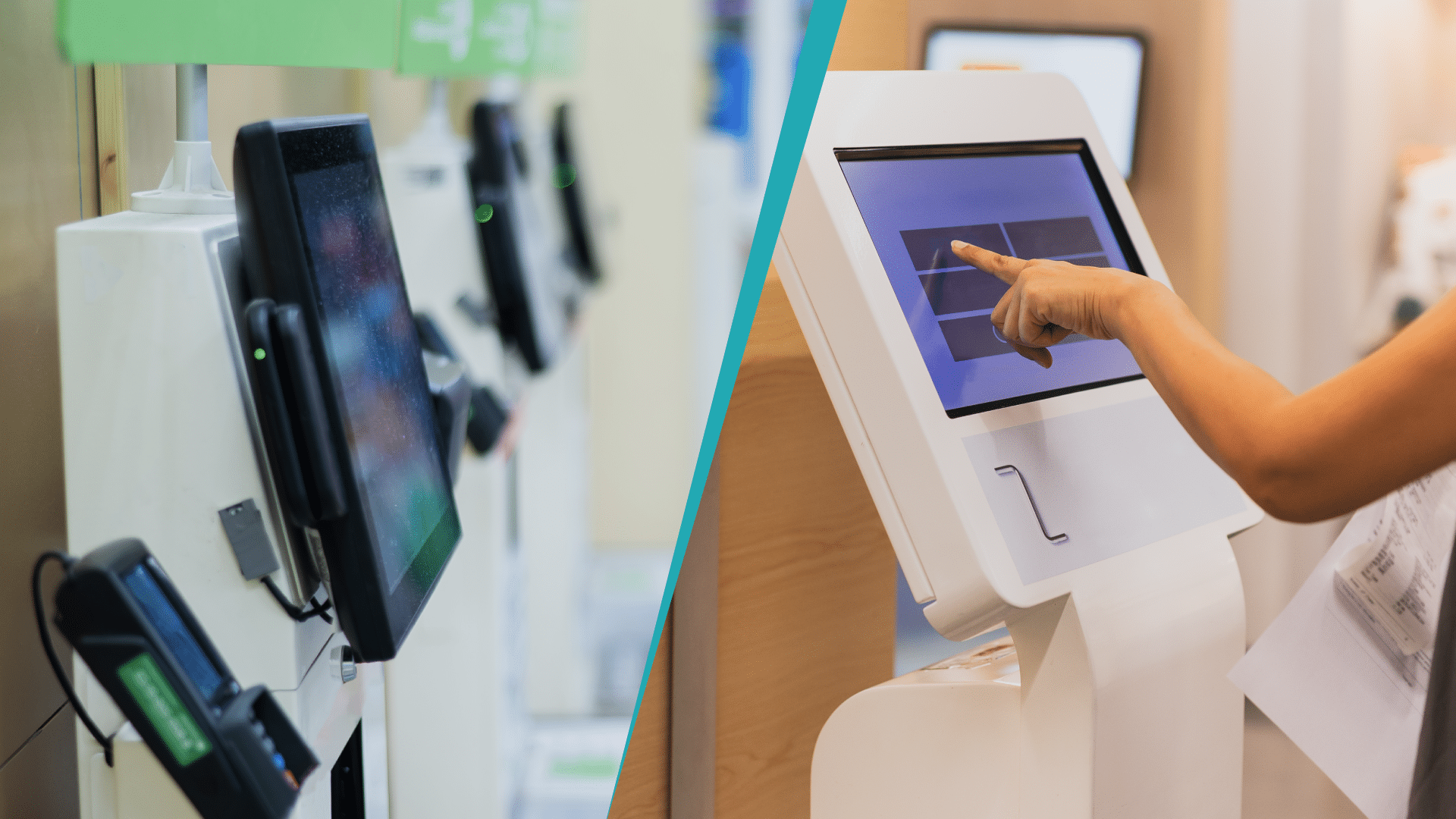Key Takeaways:
- The cost of implementing self-checkout kiosks varies depending on factors such as features, brand, and complexity.
- Basic models start at $1,500 and the most advanced systems exceed $20,000.
- Self-checkout kiosks come in different types tailored to various industries, including standing retail kiosks for supermarkets, self-service order and pay kiosks for restaurants, and ticketing kiosks for entertainment venues.
- While self-checkout kiosks offer benefits such as streamlined checkout processes, reduced labor costs, and increased customer empowerment, they also pose challenges like potential theft, technological glitches, and limited accessibility.
Are you tired of long checkout lines eating into your valuable time at the store? If so, you’re not alone. Many shoppers are frustrated with traditional checkout systems, prompting them to seek faster alternatives. That’s where the self-checkout kiosk comes in.
But before you rush to implement this modern convenience in your business, you’re likely wondering, “How much does a self-checkout kiosk cost?” After all, kiosk terminals can be large and complex and expensive.
So in this guide, we’ll delve into the intricacies of self-checkout pricing, offering insights and considerations to help you make an informed decision.
From initial setup expenses to ongoing maintenance fees, we’ll break down the various factors influencing the cost of implementing self-checkout systems in your retail environment.
Let’s explore the economics behind this innovative technology and discover how it can benefit your business.
How Much Does a Self-Checkout Kiosk Cost?
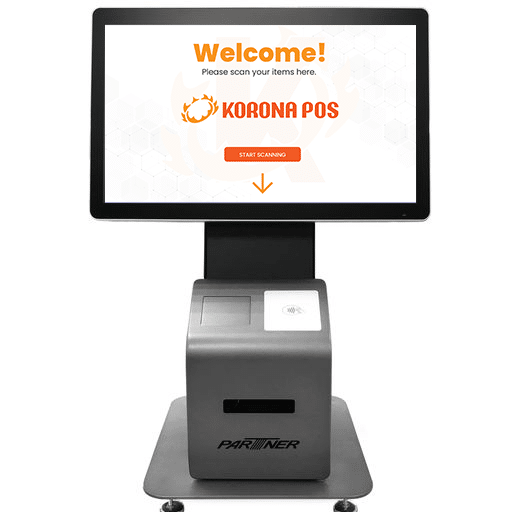
The cost of a self-checkout machine varies widely depending on brand, features, and capacity. Basic models can range from $1,500 to $10,000, while more advanced systems with additional features like implementing RFID scanning or built-in scales can exceed $20,000.
Factors such as maintenance, installation, and software updates also contribute to overall expenses. Ongoing operational costs such as staff training and technical support must also be considered.
A ballpark estimate for a single self-checkout machine will likely fall between $2,500 and $10,000, but precise figures require detailed consideration of specific requirements and market prices.
Types of Self-Checkout Kiosks
Different self-checkout machines serve different purposes. Some are meant for ordering. Others are just for paying. Kiosks can also print official tickets as part of a POS system for amusement parks or movie theatres.
Here are three types to consider:
Type 1: Standing Retail Self-Checkout Kiosks
What is it?
A vertically standing, self-service machine enabling customers to scan, bag, and pay for items in retail stores.
What type of businesses use it?
Various businesses utilize standing retail self-checkout kiosks with their POS systems, including convenience stores, supermarkets, and department stores.
What is the general price range?
The general price range for standing retail self-checkout kiosks can vary widely, typically ranging from $2,000 to $15,000 dollars per unit.
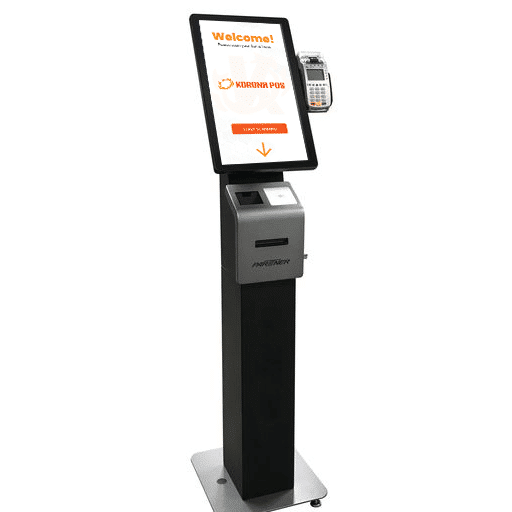
Type 2: Self-Service Order and Pay
What is it?
A touchscreen device allows customers to order and customize their meals at quick-service restaurants or sandwich shops and then pay for their orders.
What type of businesses use it?
Retailers opening quick-service restaurants, fast-food chains, and sandwich/salad shops commonly choose self-service ordering kiosks.
What is the general price range?
The general price range for self-service ordering kiosks varies between $1,500 and $20,000.
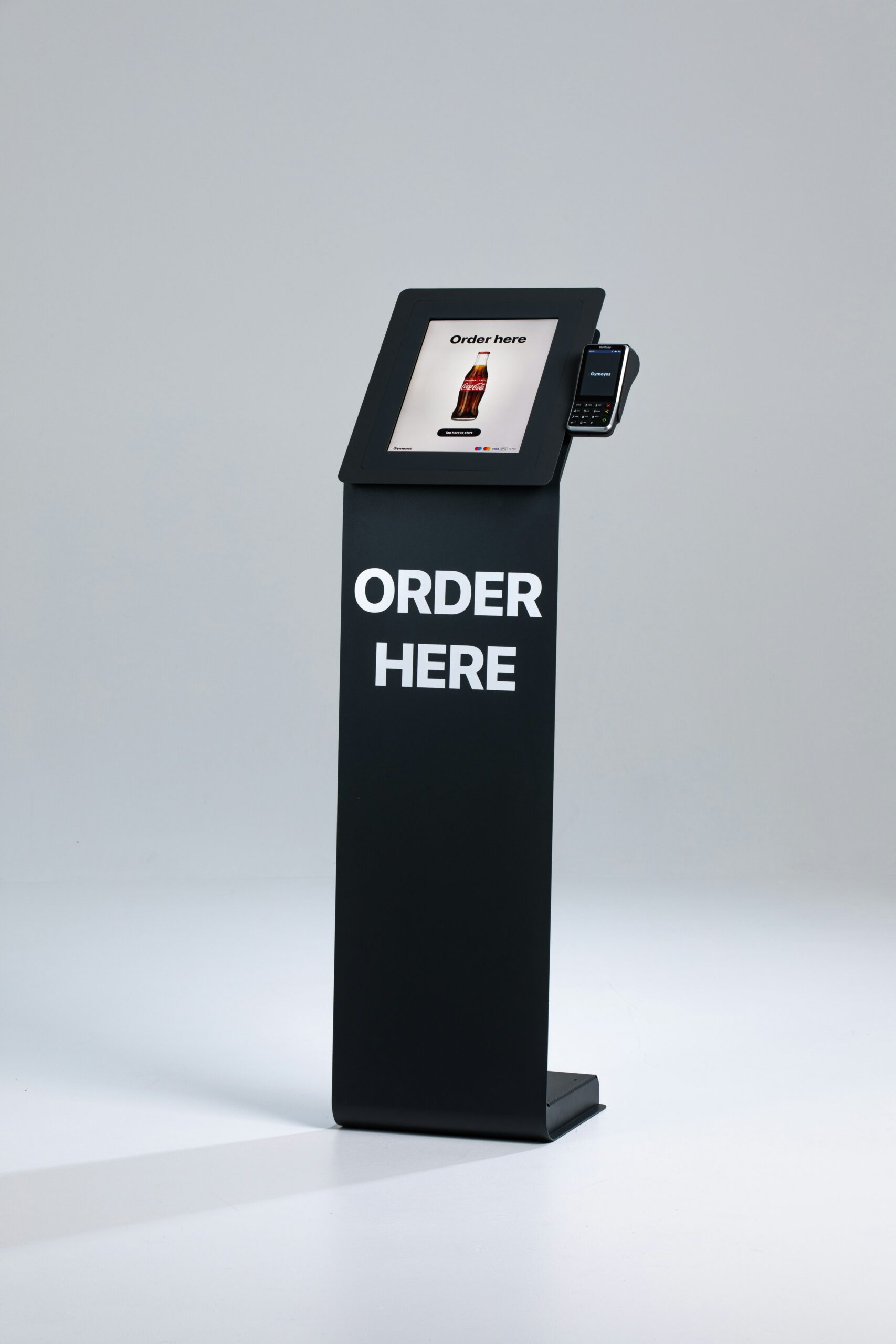
Type 3: Ticketing Self-Service Kiosk
What is it?
A standalone machine that allows customers to purchase, print, or retrieve tickets sold online without assistance from staff.
What type of businesses use it?
Various businesses such as cinemas, theaters, amusement parks, transportation hubs, and event venues utilize ticketing self-service kiosks.
What is the general price range?
A standalone self-service ticketing kiosk will cost between $1,500 and over $10,000, depending on its features and complexity.
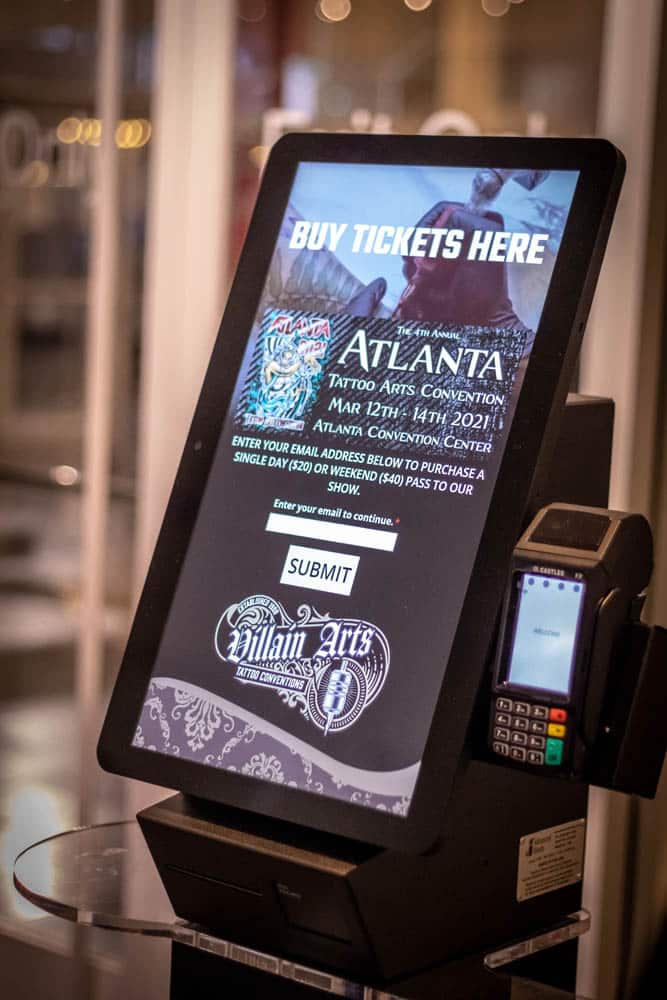
What Factors Determine the Price of Your Self-Checkout Kiosk?
Numerous factors determine the price of a self-checkout kiosk. These include hardware quality, software features, customization needs, maintenance requirements, and ongoing support services.
Understanding these influences is crucial for businesses planning to implement self-checkout solutions, ensuring informed decisions align with budgets and operational requirements.
Barcode/RFID Reader:
This device scans product codes or RFID tags to identify items for purchase. Advanced readers with faster scanning speeds, superior accuracy, and support for various barcode types or RFID standards are more expensive.
Features such as omnidirectional scanning capabilities, which allow items to be scanned from any angle, or built-in error correction mechanisms can further increase the price of the self-checkout machine.
Payment Terminal:
The payment terminal is where customers can complete transactions using various payment methods, such as credit/debit cards, mobile payments, or cash.
Modern, robust payment terminals with encryption capabilities, contactless payment support, and compatibility with emerging payment technologies can drive up the cost.
Weight Scale:
Some self-checkout machines are equipped with weight scales to ensure accurate measurement of items. This capability is especially useful for retailers that run grocery stores and sell produce by the pound.
High-precision weight scales that can handle a wide range of items and adjust for total weight integrate directly with modern self-checkout systems. A robust weight scale with integration will significantly increase the overall cost of the machine.
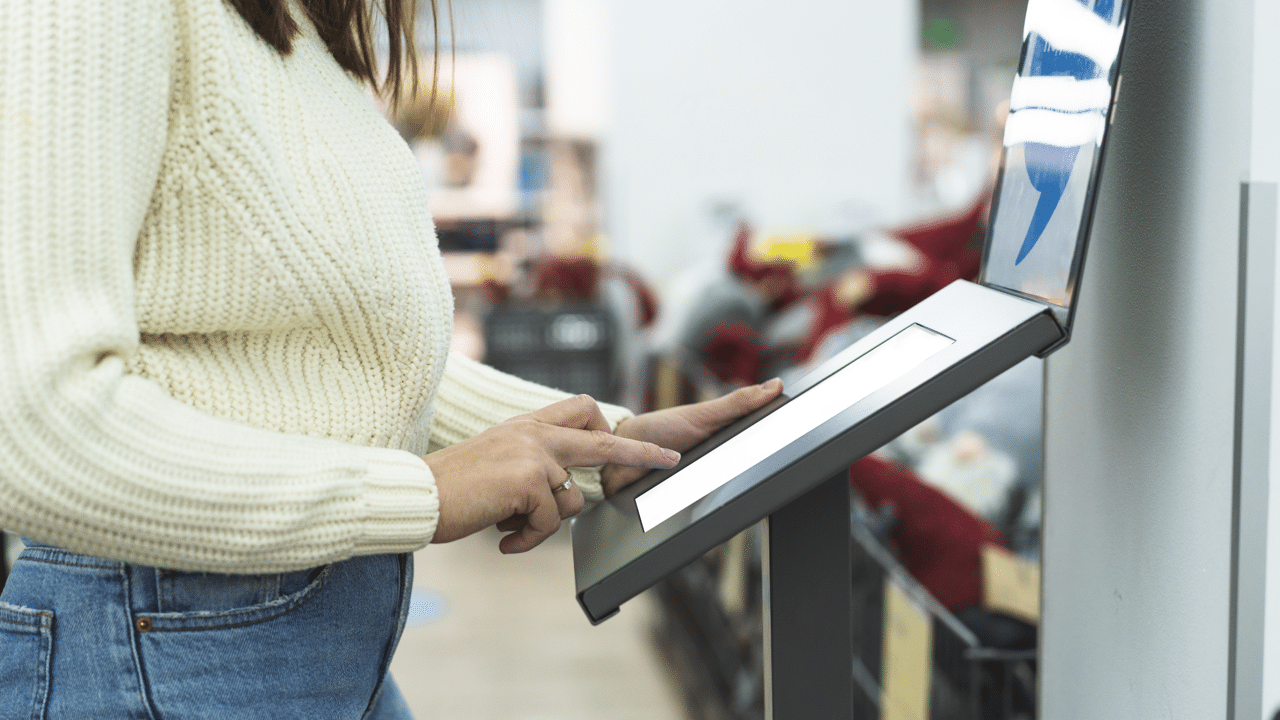
Touchscreen Display:
The touchscreen display is the user interface, allowing customers to interact with the self-checkout system. Larger, high-resolution displays with responsive touch capabilities and intuitive user interfaces may increase the overall cost of the machine.
Processor/Computer Unit:
This unit serves as the system’s brain, processing information from the scanner, touchscreen display, and other peripherals and managing the self-checkout software.
More powerful processors or computer units capable of handling high transaction volumes, complex algorithms for product recognition, and simultaneously running multiple applications will result in higher costs.
Additionally, features like built-in security measures or compatibility with future software updates may also contribute to the overall price of the self-checkout machine.

Learn more about how credit card processing works and save your business money in this free eGuide.
Is a Self-Checkout Machine Worth the Investment For Your Retail Business?
Deciding whether a self-checkout machine is worth the investment for a retail business depends on various factors. Self-checkout systems offer benefits like reduced labor costs, improved customer convenience, and faster transaction times.
However, they also entail significant upfront expenses. Considerations include the initial purchase cost, ongoing maintenance, staff training, and potential risks like retail fraud, theft or technical issues.
In addition, the suitability of self-checkout depends on the nature of the business, customer preferences, and the volume and type of products sold. For large retailers with high foot traffic and diverse product offerings, self-checkout can enhance efficiency and customer satisfaction.
On the other hand, smaller businesses or those with specialized products may find the investment less justified. Consider both short-term gains and long-term strategic advantages. A thorough cost-benefit analysis is essential to determine if self-checkout aligns with the retail business’s goals and resources.
Advantages and Drawbacks Implementing Self-Checkout
Implementing self-checkout systems offers both advantages and drawbacks. While they enhance convenience and efficiency, they also present challenges such as potential theft and technological limitations. Here are some more specifics to consider:
Advantage #1: Streamlined Checkout Process
Self-checkout expedites the payment process, reducing customer wait times. Shoppers can scan items at their own pace, minimizing peak-hour queues. This efficiency boosts customer satisfaction and encourages repeat visits, enhancing the shopping experience.
Advantage #2: Labor Cost Reduction
By automating checkout, retailers can allocate resources more efficiently, reducing the need for numerous manned registers. This automation leads to significant savings in labor costs over time. Businesses can reallocate resources to other areas, such as customer service or product innovation.
Advantage #3: Increased Customer Empowerment
Self-checkout empowers customers by granting them more control over their shopping experience. They can manage their transactions independently, verify prices, and ensure the accuracy of their purchases.
This autonomy fosters a sense of trust and satisfaction, enhancing the relationship between the customer and the retailer.
Advantage #4: RFID Implementation
RFID-equipped self-checkout kiosks offer several advantages to retailers. RFID technology eliminates customers needing to scan every barcode, minimizing errors and potential theft at the self-checkout.
In other words, customers can simply drop a basket of items in the reading zone, which will be scanned automatically and instantly. Thus, they drastically reduce checkout times by allowing for faster product identification through RFID tags.
To the right is an example of RFID-enabled self-checkout from KORONA POS.
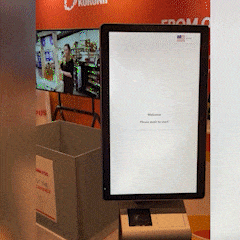
Drawback #1: Potential for Theft and Fraud
One of the primary concerns with self-checkout is the increased risk of theft and fraudulent activities. Without vigilant supervision, customers may attempt to manipulate the system by under-scanning items or bypassing payment altogether.
This theft can lead to significant shrinkage and revenue loss for the retailer, though some modern technologies promise to reduce the opportunity for such theft with loss prevention features.
Drawback #2: Technological Challenges
Self-checkout systems rely heavily on technology, which can be prone to malfunctions and errors. Barcode scanning failures, payment processing glitches, or software crashes can disrupt checkout.
These mishaps may frustrate customers and lead to lost sales opportunities.
Drawback #3: Limited Accessibility and User Experience
Not all customers find self-checkout systems intuitive or accessible. Elderly individuals or people unfamiliar with technology may struggle to navigate the interface, leading to delays and dissatisfaction. Ensuring inclusivity and providing adequate customer support is essential to mitigate this drawback.
Drawback #4 Up Front Costs
The upfront costs of installing self-service checkout kiosks can present a significant financial barrier for businesses, especially smaller retailers. These costs include purchasing the necessary hardware, software, and potentially modifying store layouts to accommodate the kiosks.
There may also be hidden expenses, such as installation fees and initial training for staff, which further add to the upfront investment.
Inventory management headache?
KORONA POS makes stock control easy. Automate tasks and get a clear picture of your entire inventory.
FAQ: How Much Does a Self-Checkout Kiosk Cost
Do Customers Prefer Self-Checkout?
According to many studies, a majority of Americans prefer to have the option of self-checkout. Self-checkout kiosks offer speed and convenience, especially for younger demographics. Nevertheless, they are not for everyone, as some shoppers value the personal interaction with cashiers.
Is Self-Checkout Profitable?
Self-checkout can be profitable for stores by reducing labor costs and improving checkout speed. However, there can be downsides like increased theft and customer frustration. Ultimately, the decision depends on the store’s products, layout, clientele, and how well they manage the kiosks.
Do Stores Increase or Lose Transactions With Self-Checkout?
Stores can increase transactions with self-checkout due to faster processing times and reduced wait times. However, some stores might experience losses if customers encounter difficulties or prefer the assistance provided by human cashiers. The effectiveness of self-checkout in boosting transactions depends on factors such as store layout, customer demographics, and the ease of use of the self-service system.
Final Thoughts
The cost of self-checkout kiosks may vary depending on several factors, including technology features and vendor pricing models. Nonetheless, their potential efficiency and customer satisfaction benefits cannot be overstated.
By embracing this innovative solution, businesses can streamline their checkout processes and enhance the overall shopping experience for their patrons.
Whether you’re a small retailer looking to reduce labor costs or a large chain aiming to improve service speed, investing in self-checkout technology can be a strategic decision with long-term advantages. With careful planning and consideration of the factors discussed, integrating self-checkout kiosks into your operations can increase profitability and customer loyalty.
KORONA POS offers a retail point of sale with RFID integrated self-checkout RFID capabilities. To learn more, click below!


